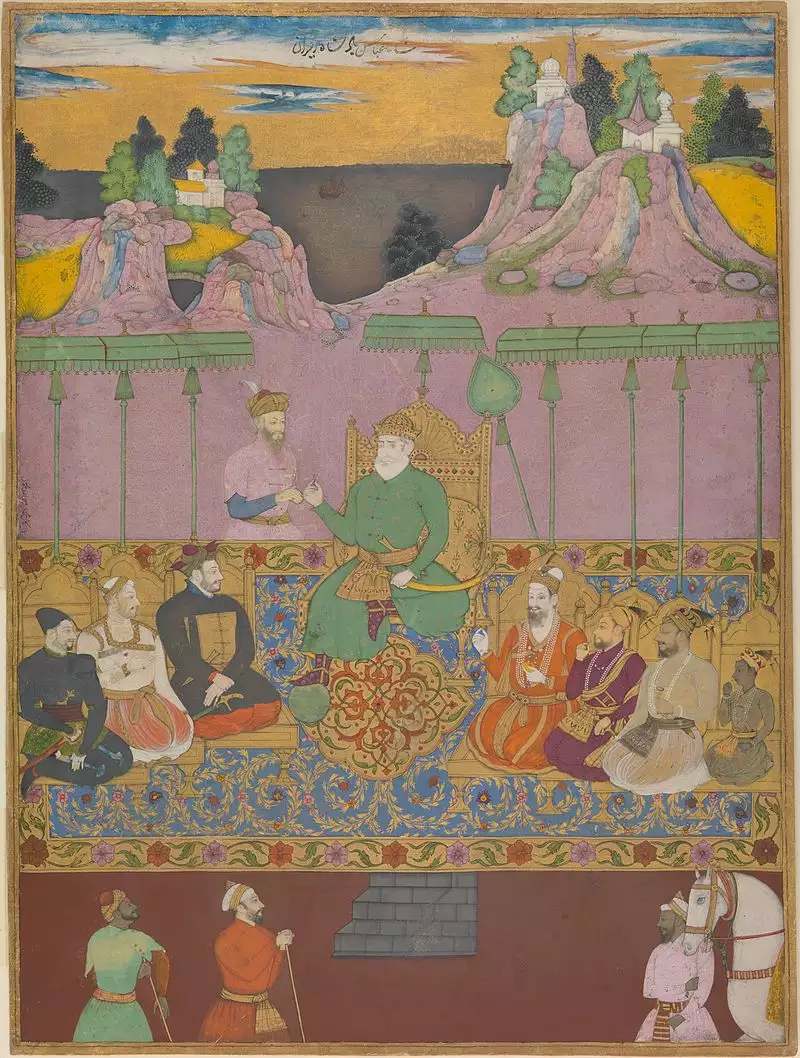Busting narratives: Why Shivaji Rajput dichotomy is false
Recently, Professor Suraj Yengde, Assistant Professor at Department of African and American African Studies at Harvard, tweeted that “if king shivaji was rajput he would’ve submitted to the mughals as a servant & merrily married his females into the muslim turk nobility. The history of India is also a story of rajput-mughal alliance. rajput-in laws gained favors as mansabdars, jagirdars in the mughal courts.”
For the past two decades since the rise of Hindutva and Ambedkarism, the political discourse about Indian History has been shaped by narratives of Maratha supremacism which was created by Marathi Brahmins in the 19 th century. Both Hindutva and Ambedkarism, are inextricably Marathi by origin and share a similar Marathi understanding of North India. For them, ridiculing the Kshatriyas is a necessary part of promoting their own history.
Thus the past few years have witnessed repetition of hate propaganda against the Kshatriyas emanating from the very powerful and all-pervasive lobbies of Deccani filmmakers or Marathi owned media Houses. Hindutvavadi Movies like Tanhaji(2020) by Om Raut, a maratha,and Jodha Akbar (2008) by Ashutosh Gowariker, a Marathi brahmin, are few examples. Comparing Gowariker’s eulogistic portrayal of the Peshwas with dismissive portrayal of the Kshatriyas and Jats in Panipat- the Great Betrayal (2019) exemplifies this normalised trend. Rightwing authors like Dr Uday Kulkarni regularly berate the Rajputs (Kshatriyas) to promote a larger-than-life picture of the Peshwas.
Seven years back, Girish Shahane, a Marathi brahmin and an art curator, wrote a denigrating article dismissing the Kshatriyas as defeat-specialists and even mocked figures like Maharana Sanga, Pratap and Prithviraj Chauhan. Since then, a particular media platform which is owned by businessman Samir Patil (a Maratha) has regularly reshared the article almost every month. Many in the Left and liberal circles gleefully shared Shahane’s diatribe, ignoring that Shahane was only echoing views of Guru Golwalkar on the Kshatriya community of North India (Rajputs).
However,when a senior academic like Yengde who teaches at Harvard makes such casteist and misinformed statements, it is problematic for many reasons.To assess the inherent ignorance in Yengde’s boastful statement, an objective reading of History of Deccan is needed.
In 1307, Allaudin Khilji defeated Ramchandra Jadhav, the Seuna Yadav ruler of Deogiri and married his daughter Jhatyapali (History of Khaljis, K.S. Lal). Ramchandra served as vassal of Khilji and was an ancestor of Jijabai, mother of Shivaji. Alauddin II Bahman Shah married the Maratha princess of Sangameshwar, while Firoz Shah Bahmani married another Maratha princess from Sangameshwar. (History of Dekkan, translation of Ferishtah by Jonathan Scott, pg 113). In return, Bahmani Sultans conferred upon Marathas the Deshmukhi and Deshpandyagiri of lands, military ranks and Jagirs for maintenance of horses etc besides composing them into garrisons of the forts (Duff Grant, History of Mahrattas, Vol. I, 1974, pg 25–29).
The Bahmanis were replaced by Adilshahi Sultanate (also called Bijapur Sultanate).Yusuf AdilShah(1489–1510) married sister Jamkhind’s Brahmin ruler Mukundrao, who became famous as Punji Khatun. She was the mother of Ismail Adil Shah. Adil Ali Shah’s mother was a Maratha Princess too. In his History of Aurangzeb, Jadunath Sarkar mentions that Rajaram Bhosle married his two daughters to Muslim ruler of Gondwana. Maasir-i-Alamgiri mentions that Sambhaji’s daughter was married to Sikander Shah Bijapuri. In fact, such marriages even involved the Ahoms and the Mughals.
Ramani Gabharu, a niece of Lachit Borphukan, was married to Qutb-uddin Muhammad Azam, who was Mughal emperor briefly, and took the name ‘Rahmat Banu Begum’. (Surya Kumar Bhuyan, Atan Buragohain and His times, p. 31).
It must be remembered that political marriages or mansabdari were practical routes to peace and stability for rulers, who also took to rebellion when needed. Duff writes that the Ahmednagar Sultanate (also called Nizamshahis) depended so heavily on Maratha soldiers that he disbanded most of his foreign troops and enlisted 30,000 Deccan horsemen. The Bhosles, Shirkes, Ghatges, Mohites, Dafles and Ghorpades were prominent warlords of the Deccan Sultans.
Jadhav Rao, the grandfather of Shivaji, was enlisted by the Mughals in 1620 after he quit the service of Malik Ambar (Grant Duff, Vol 1, p. 36). His lineage served both Shah Jahan and Aurangzeb off and on. In fact, his grandson Shivaji assisted the Mughal army as the head of 2000 horsemen and 7000 foot-soldiers in 1665 (JN Sarkar, Military Despatches, 102-103). M Athar Ali highlights in The Mughal Nobility under Aurangzeb (p. 35) that there were 96 Maratha mansabdars as against 72 Rajput mansabdars under Aurangzeb from 1679 – 16 had rank of 5000. 18 had a rank of 3000-4000 and 62 had a rank of 1000.
Shivaji’s father Shahaji Bhosle led forces of Bijapur against the Kempegowdas of Bengaluru. In return for his loyal services and his military success against Kempegowda, Shahaji was bestowed the jagir of Bengaluru. The Bhosles also led Bijapur armies against the Nayaks of Thanjavur, thereby becoming governors of the region. As the Bijapur Sultanate declined, Venkoji, the brother of Shivaji, declared himself a sovereign.
After being defeated by Amer ruler Jai Singh I at Purandar, Shivaji was helped by the former to gain pardon and mansabdari under the Mughals. Shivaji constantly shifted sides between Mughals and Bijapur Sultans, until the weakening of the latter created a local political vacuum and opportunity for him. This led to the rise of Shivaji, however, even until 1708, Maratha rulers needed permission from Mughal ruler Bahadur Shah I in succession.
Unlike the popular misconception, the Maratha Empire was more Brahminical than the so-called Rajput polities of North, whose culture was a junction between many religions including Jainism and Buddhism. History is an interesting subject, provided it is not used for political propaganda to further caste, religious or regionalist chauvinism. As an Indian scholar at Harvard, Professor Yengde must remember he represents all Indians – not just his caste or region.

